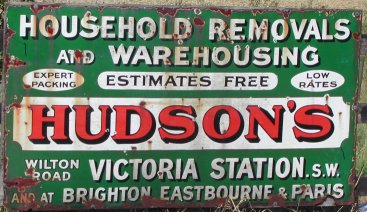The Street Jewelry Collection at the Colne Valley Postal History Museum
In addition to the many postal history related items in the collection, the Curatorial Team has also amassed an interesting collection of fascinating way-side signs that once adorned our streets like jewelry. We have some extremely rare AA signs which used to be erected in villages and towns, together with some advertising signs and other interesting road signs.
.
These splendid AA Village signs were erected when there was no statutory duty on local Councils to put up sign posts. Consequently, both the AA and RAC undertook large signage projects throughout the country. They date from 1912-1928 and exhibit numerous small differences. We started with one in 2000 and today we have 54, the largest collection in the country and the true home of the AA Village Sign. Abandoned by the AA at the outbreak of WW2, there are still some of these signs in their original locations, but by far the largest number are in private hands and small motoring museums around the
country.
|
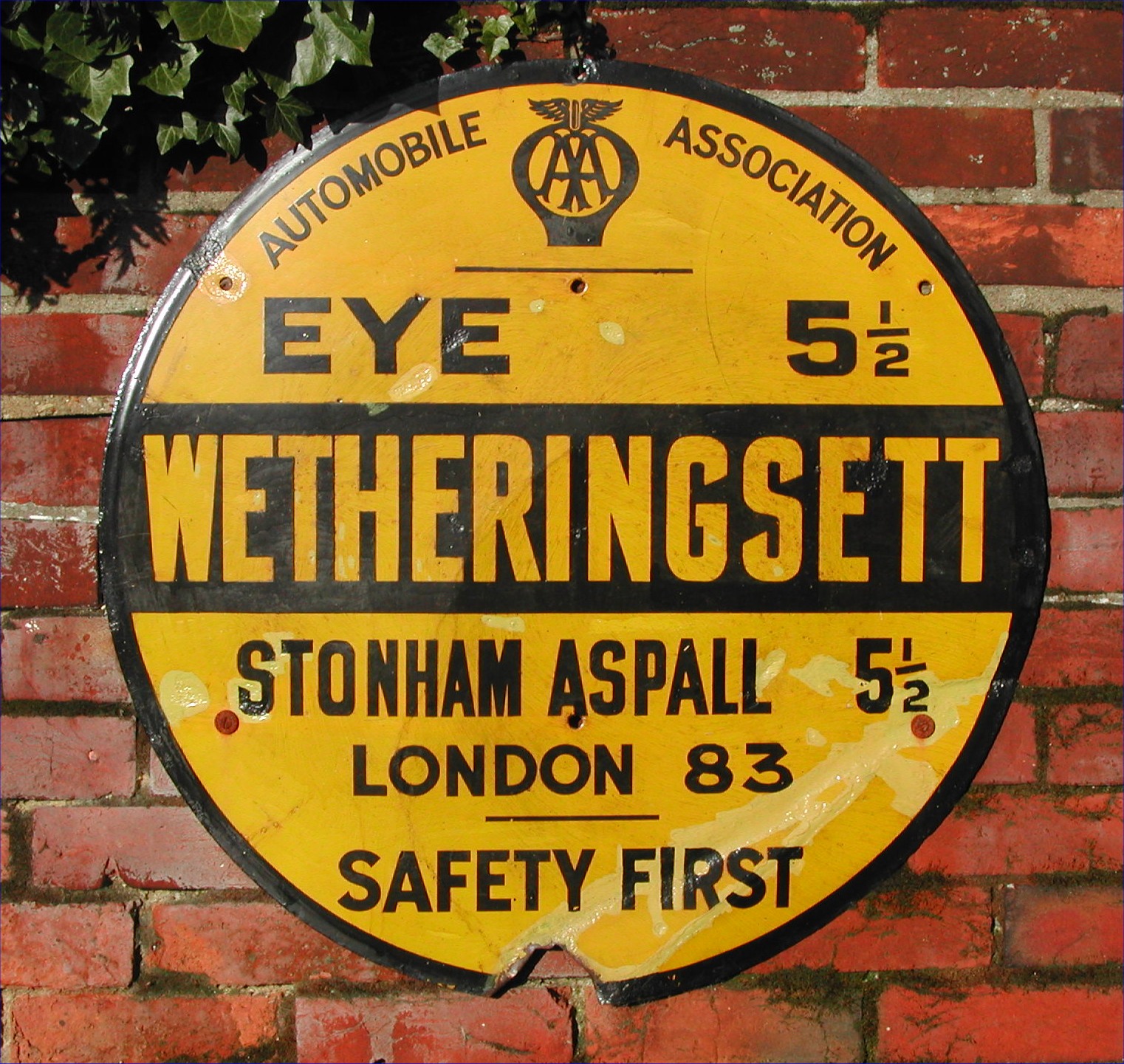
Our first AA sign came from a salvage yard in Ipswich and, not surprisingly, is for a Suffolk village. Wetheringsett is just off the A140 between Ipswich and Diss. This sign was in very poor condition when acquired. A large area of wasting at the bottom has since been repaired. |

Our second AA village sign was a surprise acquisition from another salvage yard, this time in Devon. Consequently it is a West Country sign. The village of Loxhove Cott is high up on Exmoor, between Barnstaple and Lynton. The sign was in much better condition than the first. |
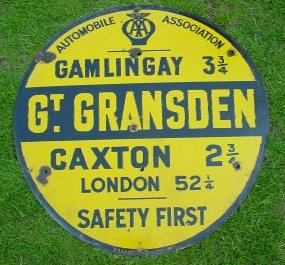
Our fourth AA sign was the first to come from the ubiquitous Ebay. It was sold by a Cambridgeshire dealer who retained the Warboys sign in his collection. |
|
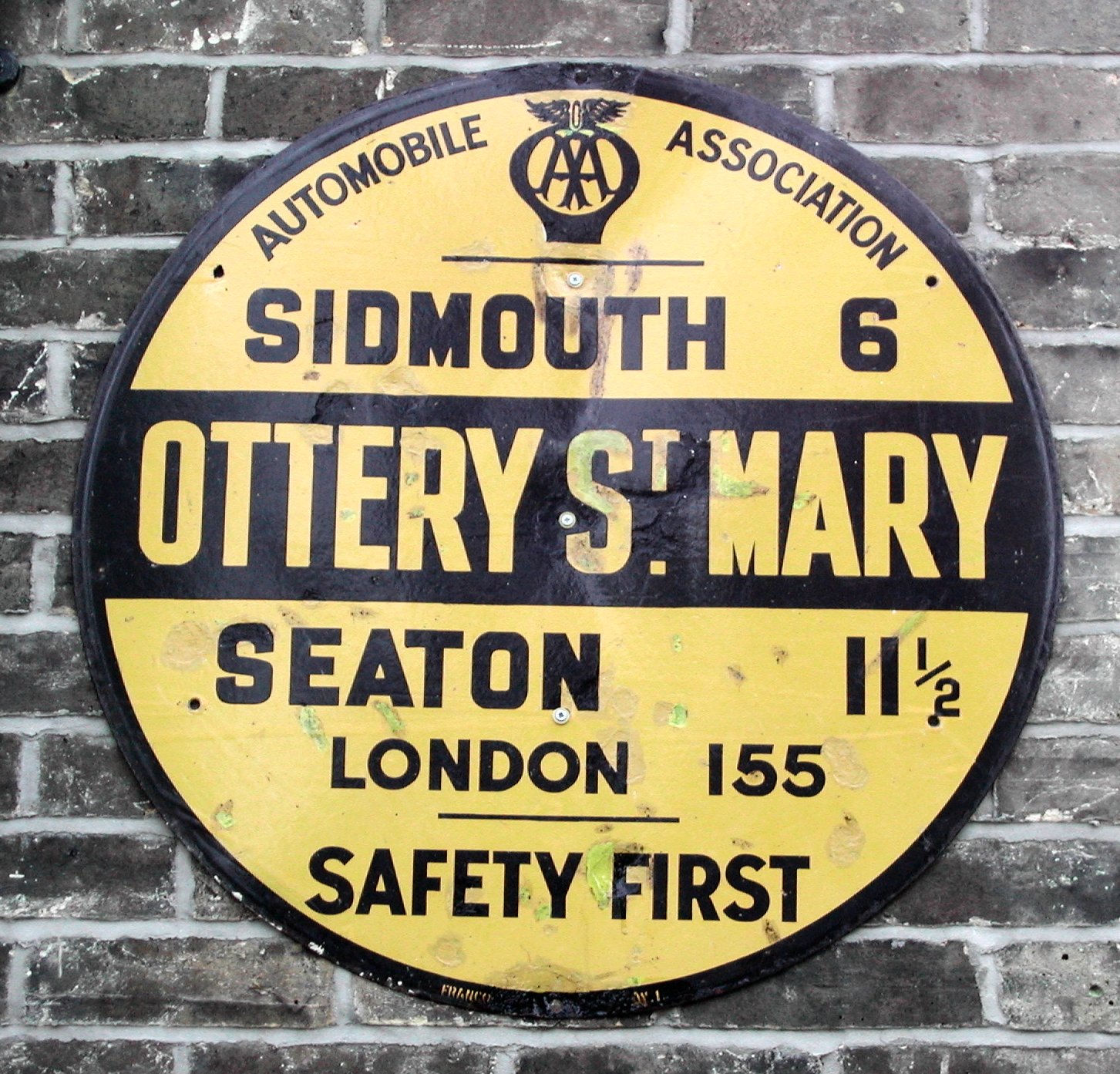
Our third AA village sign is this superb example from Ottery St Mary in Devon. It is rather interesting in that all three of the local names carried, the others being Seaton and Sidmouth, were also names carried by West Country Class Pacifics of the Southern Railway.
|
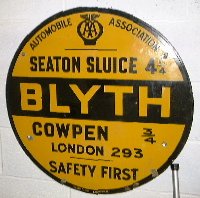
Our fifth AA village sign came in a sign swap with a collector in Belper.
|
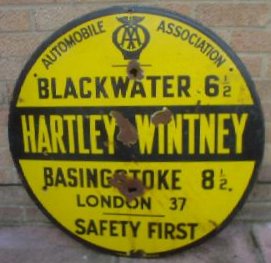
This one has now been restored and came in the same swap. |
|
|
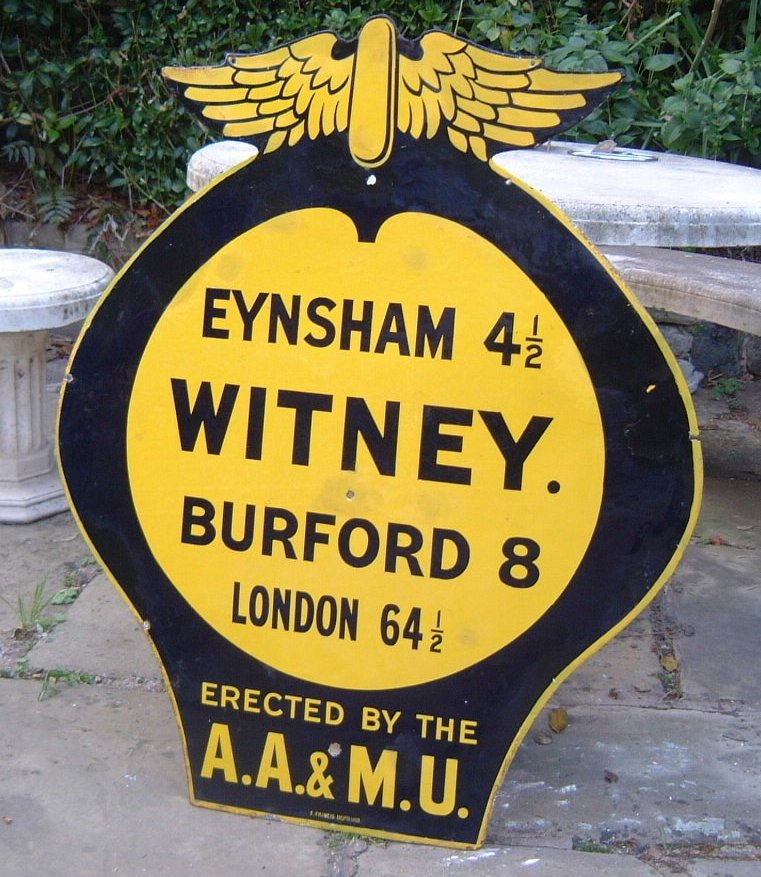
This was our first "winged" sign and came from a dealer in Manchester. |
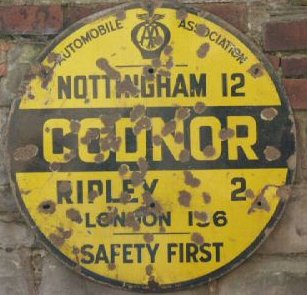
Codnor appears to have been used for target practice! |

The third sign in our swap deal with Belper was this rather poor Popham. It has now been restored. |
|
|
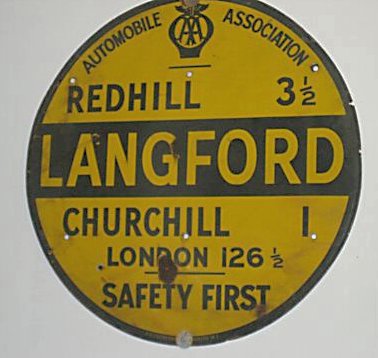
Acquired via Ebay from Manchester, Langford is near Bristol Airport |
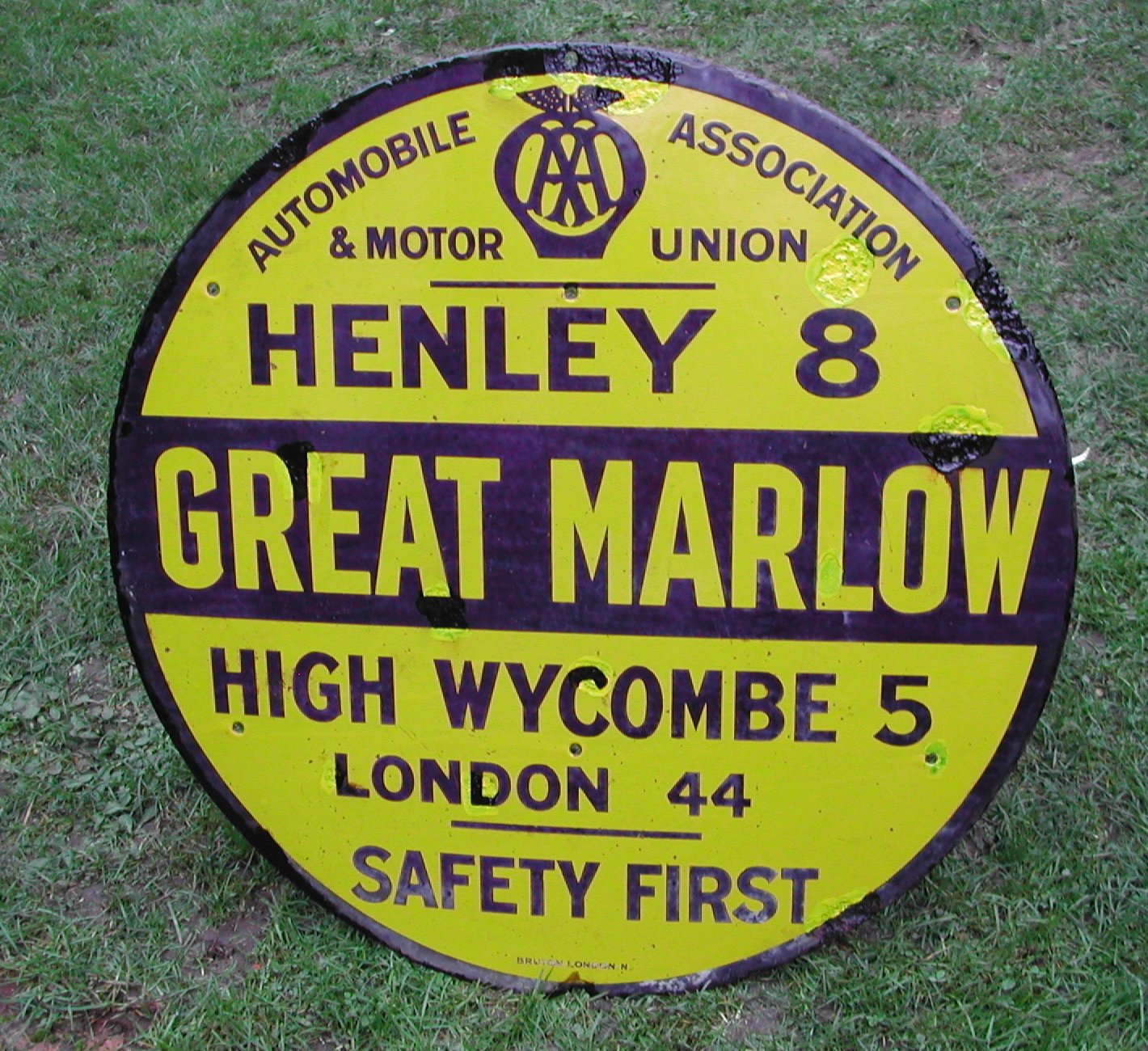
Another Ebay win, when cleaning started this was revealed to be one of the very rare violet-blue on yellow signs, made by Bruton & co. |
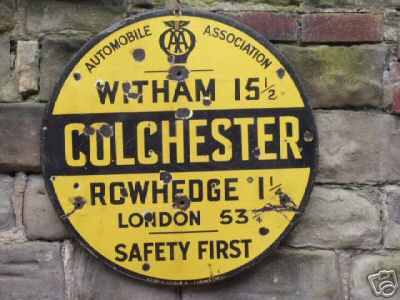
Our latest win on Ebay, this one had to come back to Essex! It is very different to the one in Alan Mattin's collection which you can see in the main Village Signs page by clicking here. |
|
|
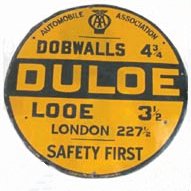
An auction win from GC Railwayana
|
.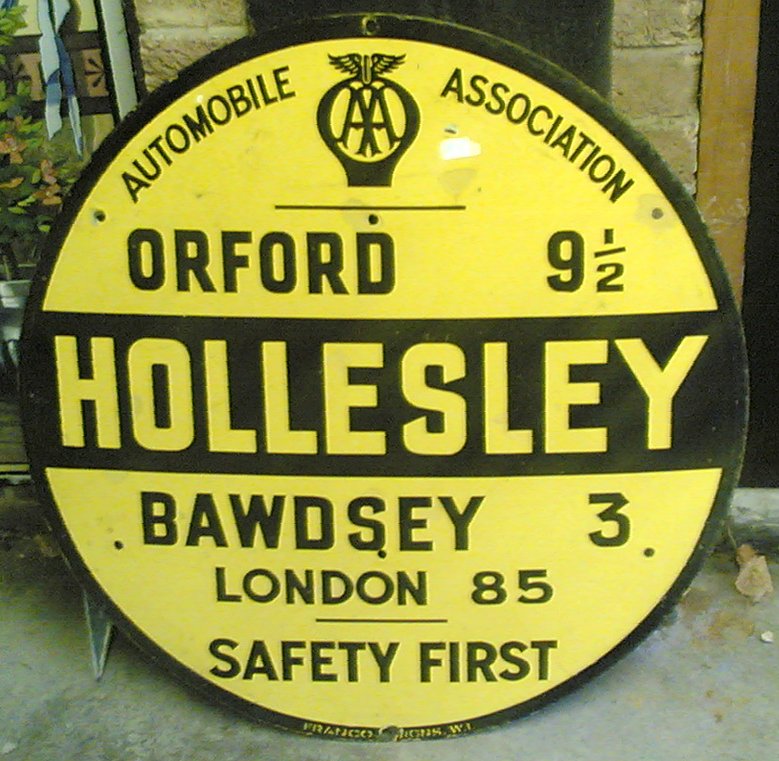
Part of our recent 4-sign deal!
|
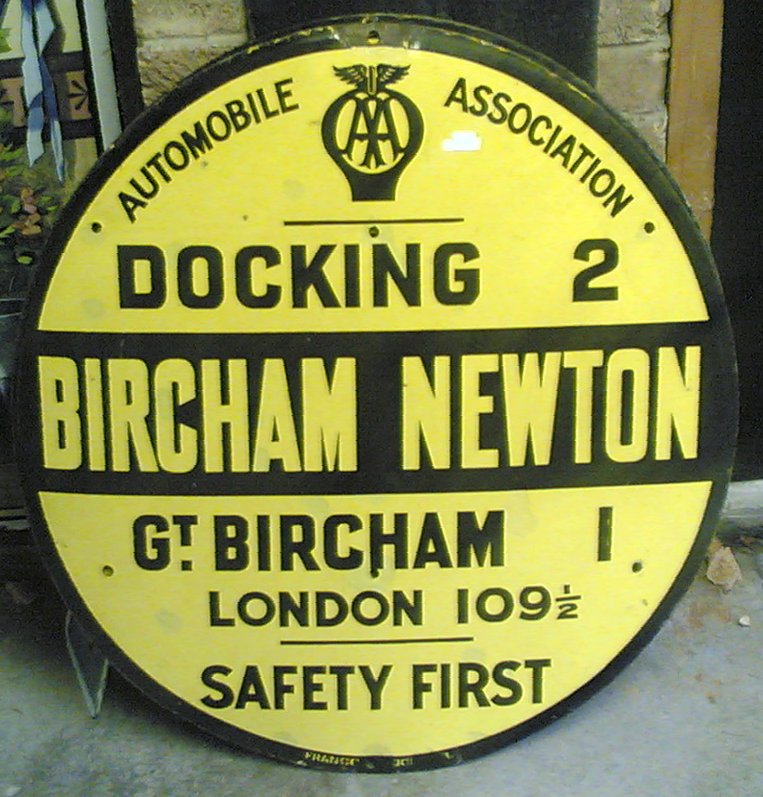
An East Anglian gem - Norfolk |
.
|
|
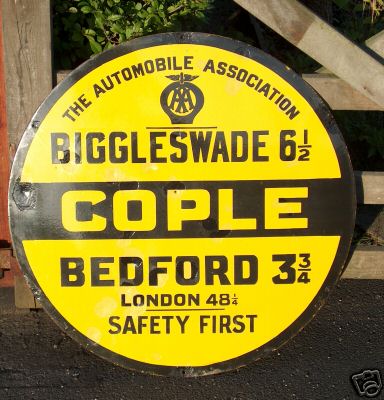
We didn't bid when these appeared on Ebay, but they came our way as part of a complex swap anyway! |
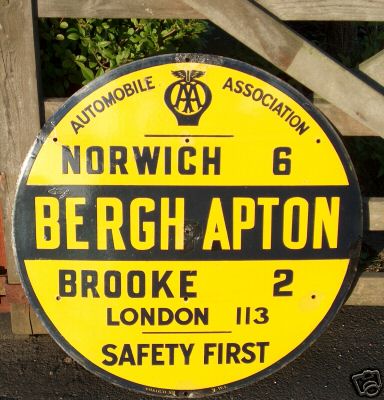
Another Norfolk gem in very good condition. |
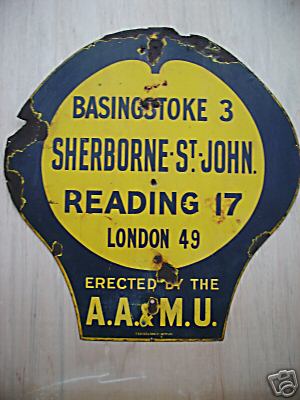
This Hampshire sign unusually has a bracket fixed to the rear. |
 |
A rare Bruton sign in blue.
|
|
|
|
|
|
|
|
|
|
|
|
|
|
.
|
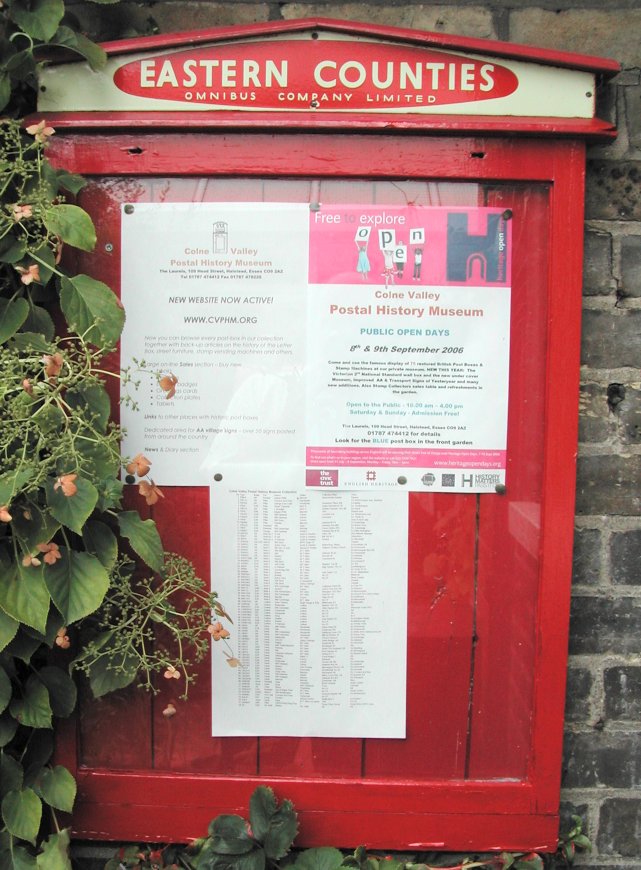
This original Eastern Counties Bus company timetable board now serves as our in-house notice board. It was restored by John Wells.

|
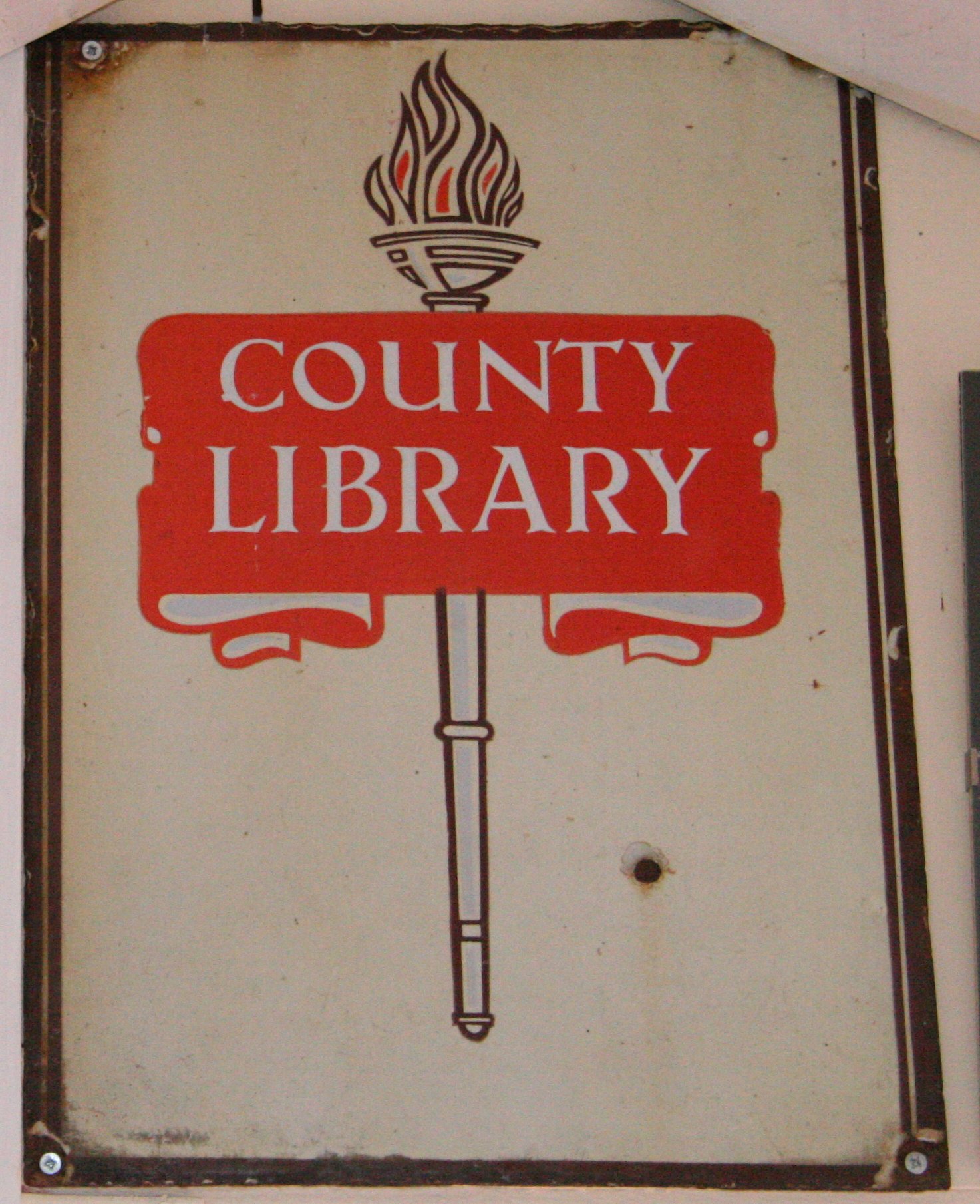
The County Library sign, right,was stored for many years in the roof of Halstead Library, whilst the A W Bombs sign, left,(a relic of Home Guard service) was found in the cellar of a local house! |
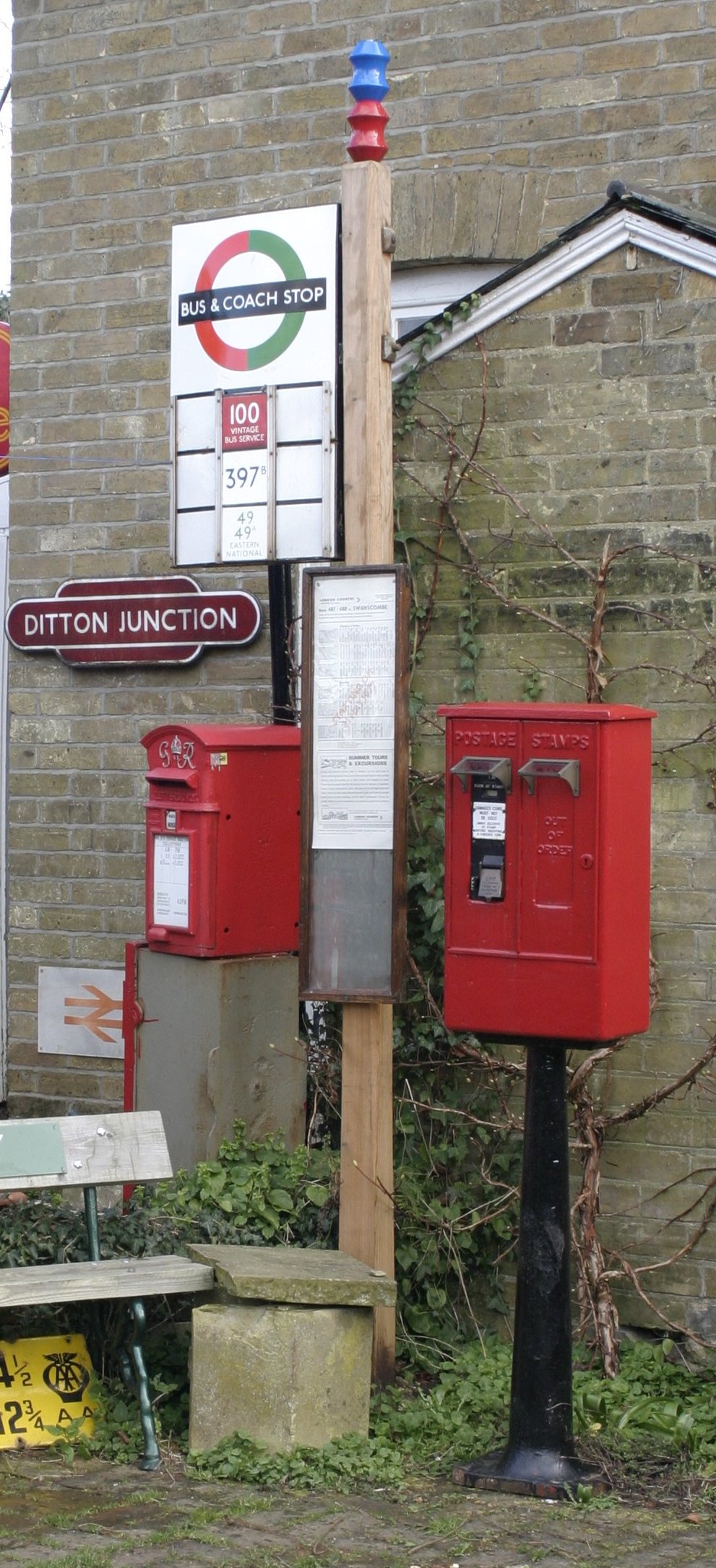 
Our London Transport bus stop carries a "9 Boat" flag with space for 9 route plates to be displayed. We now have all nine plates, including a very rare Green Line Fare Stage.. The pole also carries a timetable board for the Service 467 in the Sanderstead area of South London, Summer 1977. |
|

Our AA School warning sign came from West Wales and looks a fine sight after a full restoration. There were multiple subjects for this design, you can see more by clicking on either of the images - use your Back button to return to this page. |
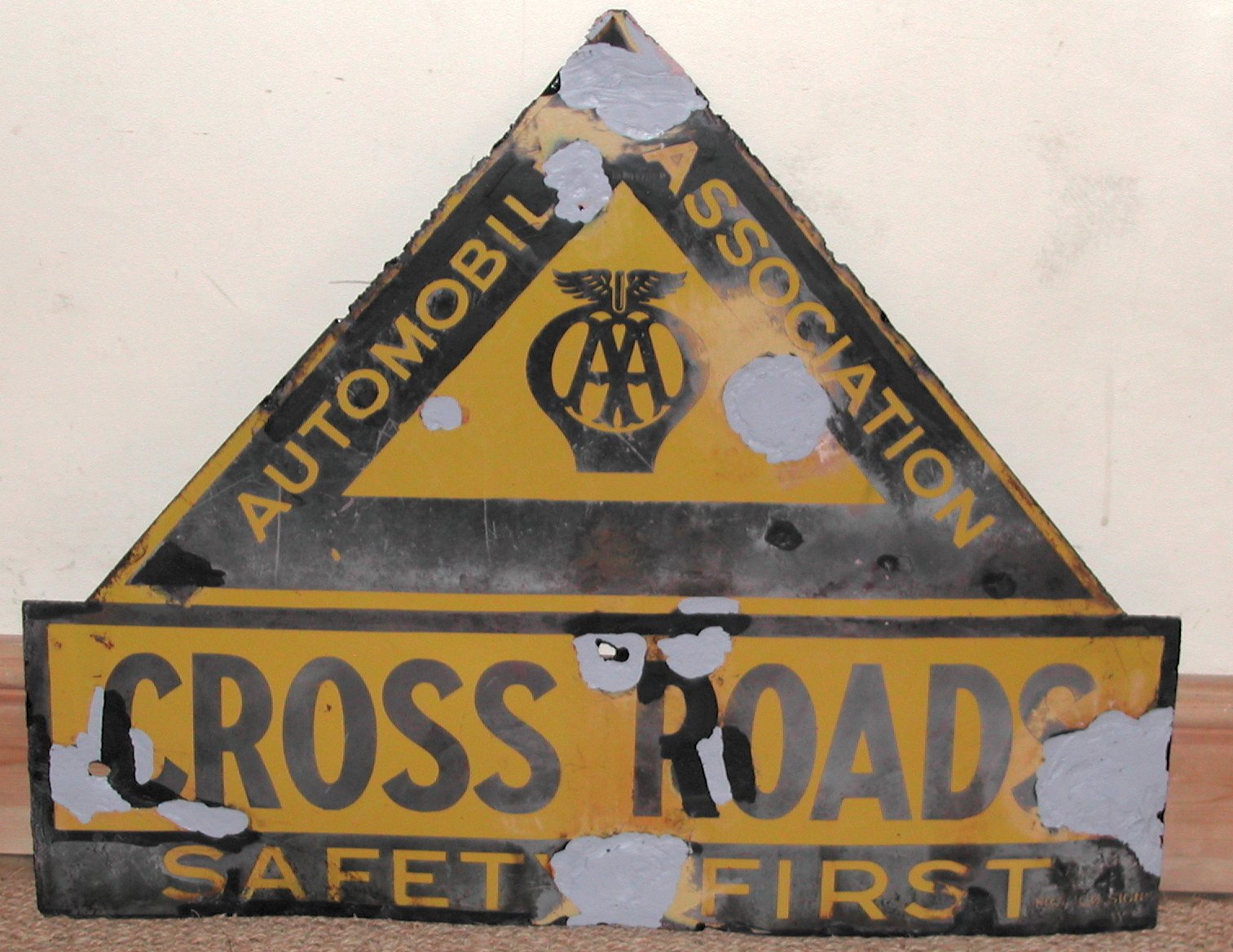
The cross roads sign during restoration. There were many holes where it had rotted through. |

The two AA warning triangle signs show some very interesting differences - not least in the shape of the AA badge itself. The Motor Union one is believed to be the older of the two.
Click on the image here to see possibly the rarest of these signs in another collection. |
|
|
|
|
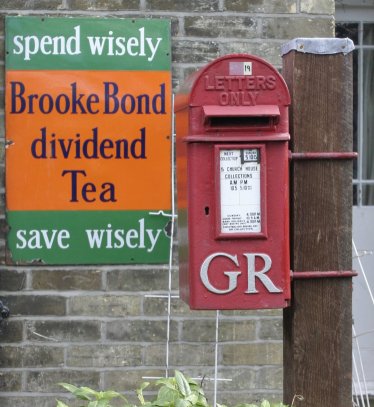
In this photograph you can see a once-familiar advertising sign from the 1950s. Brooke Bond Tea was widely promoted on enamel signs and many have survived. This one turned up in a local auction and subsequently found a home in the Museum |
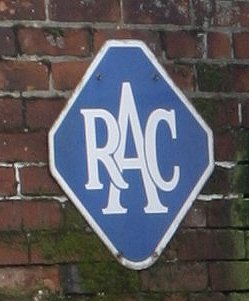
This RAC signed turned up in a local antique shop and was acquired a couple of years ago. It is double sided so probably hung outside a hotel or restaurant. |
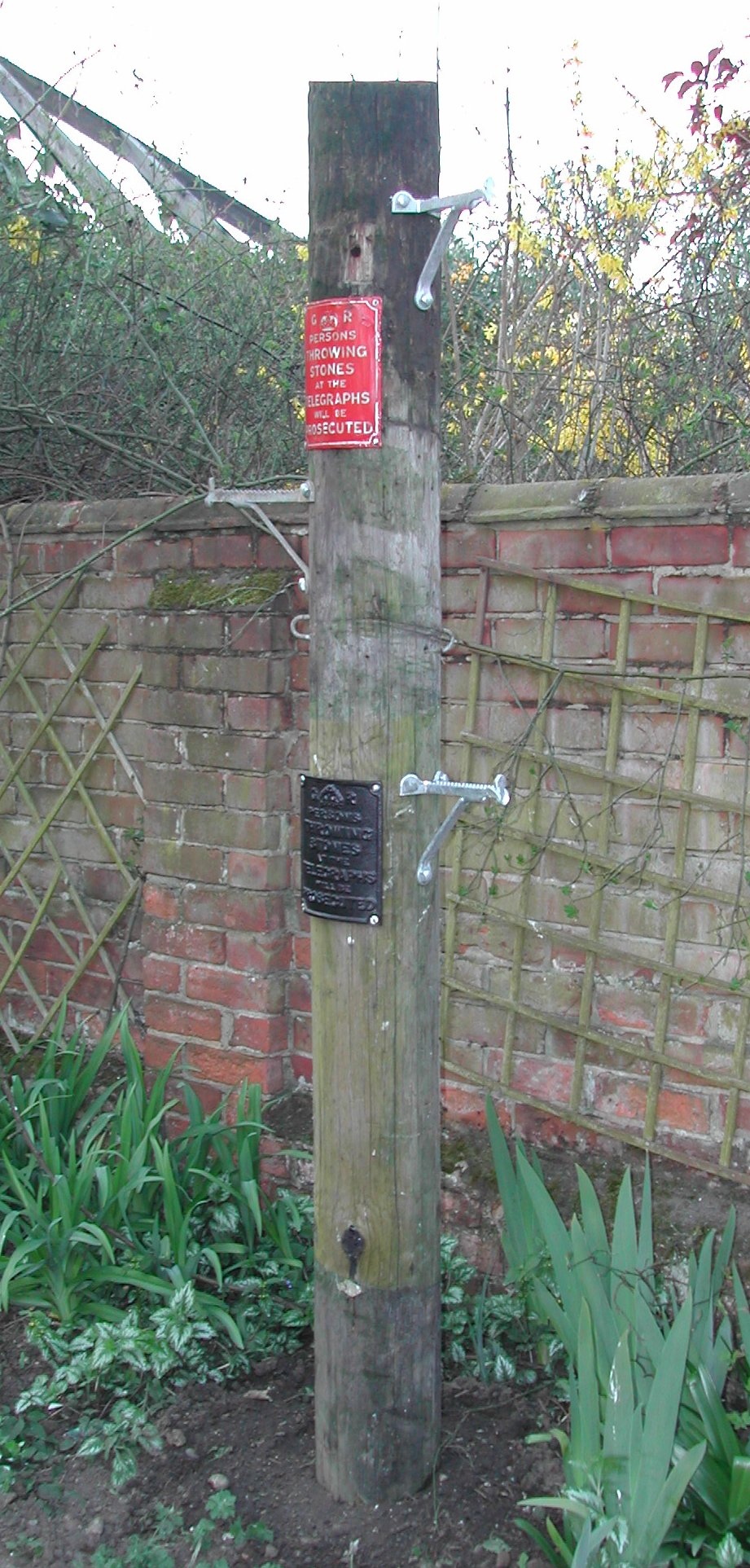
The new "fatter" telegraph pole erected 1/4/07 and carrying three standard GPO foot rests, GPO cable grips and two GR Persons Throwing Stones signs - ome in enamel and one in cast relief. |
|
|

Another sign usually found above the Post Office doorway is "Telegraph Office". However, both left- and righ-hand direction signs also exist.

Modern Post Office signs are known as Lozenges for no apparent reason. They are made of blow-moulded plastic which is cheap and light weight. In the latest green & red version the letter is self-adhesive vinyl. |
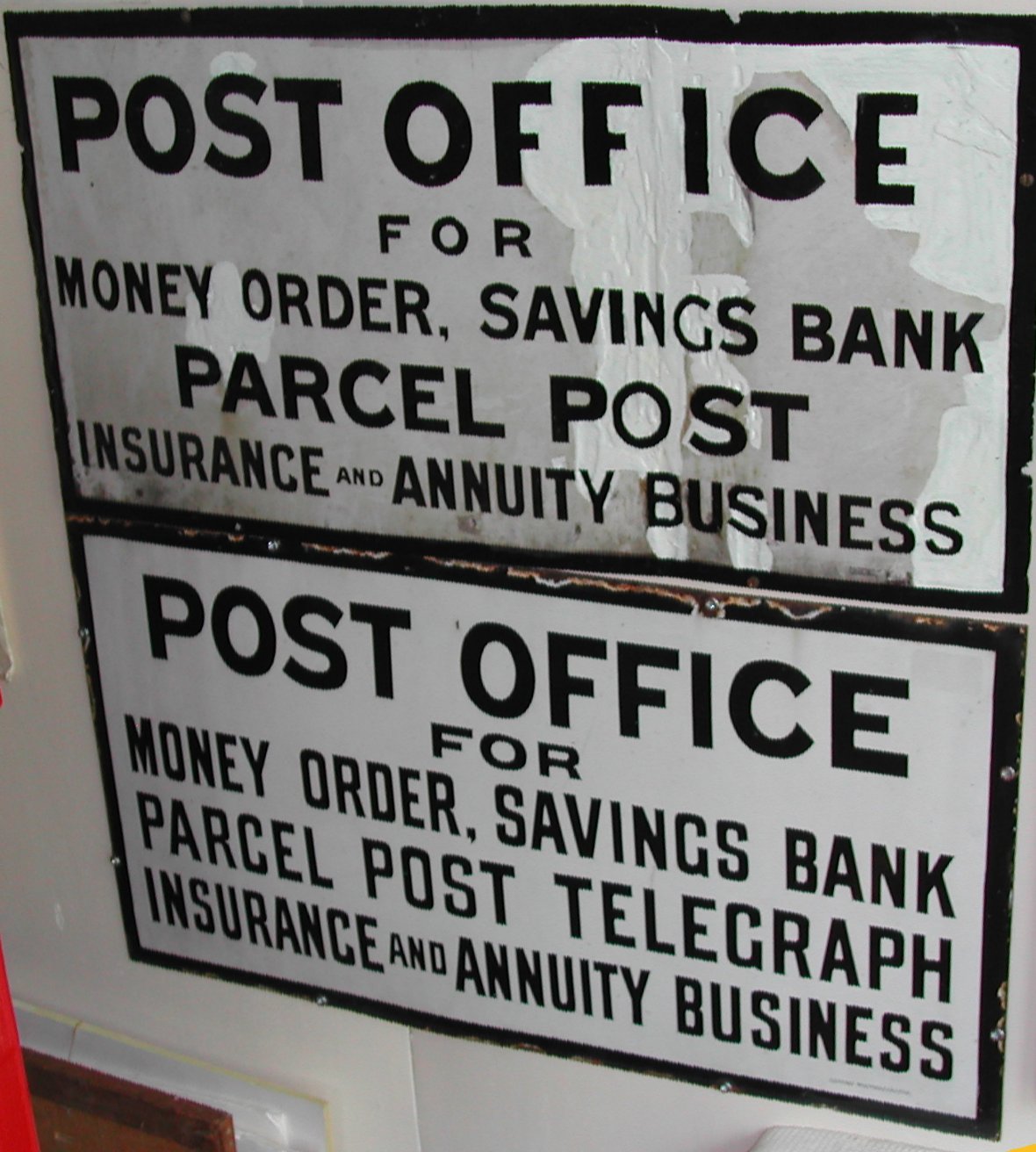
These are just two of a seemingly myriad array of designs for the main Post Office sign above the entrance to smaller POs from the early 20th Century. The key difference here is that office hasd a Telegraph machine and the other does not. There are many variations of the wording and typeface. |
|
|
That's a selection of our best signs. Below you can see some of our Telephone related signs, as this too is an important part of our Postal History. The hanging Telephone arrow is now particularly rare.
.
|
.

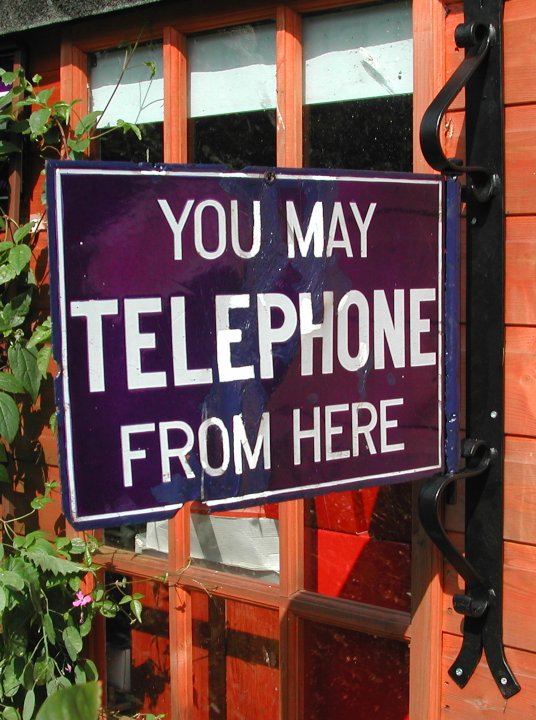
The lower Telephone sign here has been fitted to a replica bracket. |

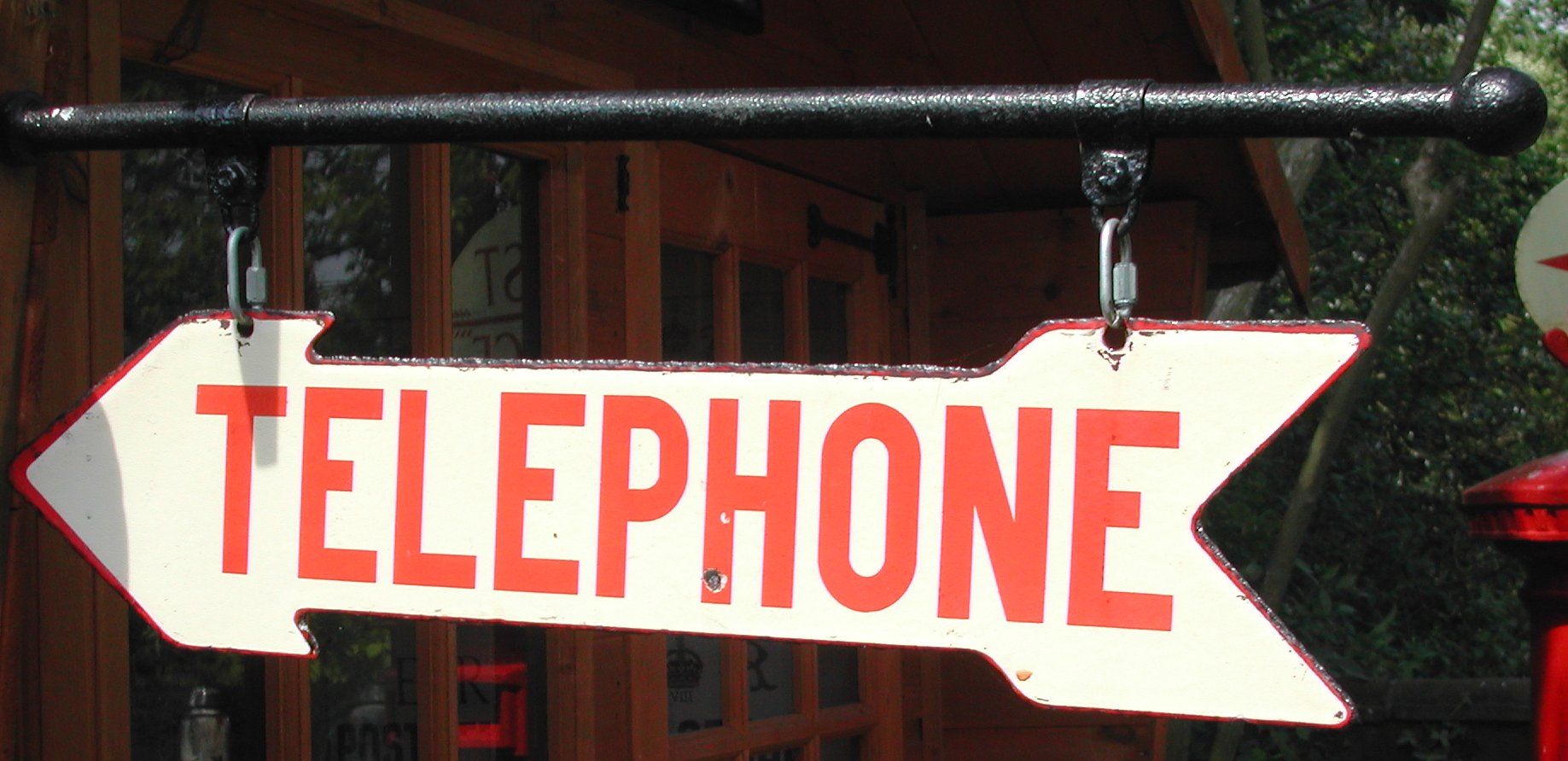

|
|
.Back to Features Index | 